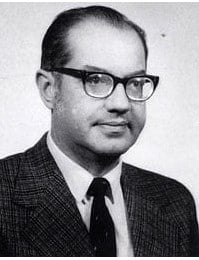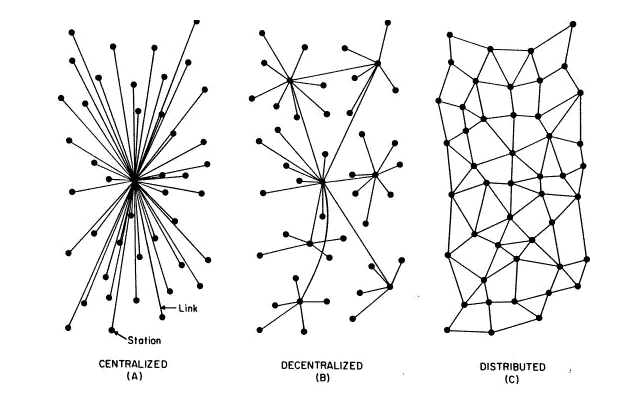Who Was Paul Baran?
Born on April 29, 1926, Paul Baran was an American inventor, economist, and electrical engineer who, alongside Leonard Kleinrock and Donald Davies, can be credited as the inventors of digital packet switching networks that dominantly formed the basis of the internet.

Baran holds several patents and has received numerous professional honors, including the IEEE Alexander Graham Bell Medal, the Marconi International Fellowship Award, and the National Medal of Technology and Innovation.
Quick Facts
- Full Name
- Paul Baran
- Birth
- April 29, 1926
- Death
- February 27, 2022
- Net Worth
- $7M
- Awards
- IEEE Alexander Graham Bell Medal
- Computer History Museum Fellow
- Marconi Prize, NMTI
- National Inventors Hall of Fame.
- Children
- David
- Nationality
- Polish, American.
- Place of Birth
- Minnesota, United States
- Fields of Expertise
- [“Computer Science”,”Inventor”,”Information Technology”]
- Contributions
- Packet Switching
Early Life
Paul Baran was born in the town of Grodno (then in Poland, now in Belarus) as Павел Баранов (Yiddish given name “Pesach,” one of the most commonly observed Jewish holidays, usually in April) on April 29, 1926. Paul was the youngest of three children in a Jewish family.
In May 1928, his family moved to the United States, first in Boston, then in Philadelphia, where his father, Morris “Moshe” Baran, owned a small grocery store. Paul delivered groceries for his father in his little red wagon as a child.
Baran received his bachelor’s degree in electrical engineering from Drexel University, Philadelphia, in 1949.
Career
Phase 1
After receiving his bachelor’s degree in electrical engineering from Drexel University, Philadelphia, in 1949, Paul Baran was hired immediately by the Eckert-Mauchly Computer Company as a technician on the world’s first commercial computer, the Univac.
Phase 2
Paul joined the Raymond Rosen Engineering Products Company in 1950, where he designed the first telemetering equipment for Cape Canaveral.
Phase 3
After marrying Evelyn Murphy in 1955, Paul moved to Los Angeles and joined the Hughes Aircraft Company, where he worked for 4 years while preparing for his Master’s degree.
Phase 4
After obtaining his Master’s degree in Engineering from UCLA in 1959, Paul Baran started working with the Research and Development (RAND) research organization in the same year. After WWII, RAND was founded in Santa Monica, California, to help maintain the unique system analysis and operations research skills developed by the US military to manage the unprecedented scale of planning and logistics during that global conflict.
What Was Paul Baran Known For?
Invention 1
Using a mini-computer, Baran and his team developed simulation programs to test the basic connectivity of an array of nodes with varying degrees of linking. That is, distributed network models of any degree of connectivity would have links per node.
The simulation randomly destroyed nodes and subsequently tested the percentage of connected nodes. The result of the simulation revealed that distributed networks where n>=3 had a significant increase in resilience against even as much as 50% node loss. Baran’s conviction gained from the simulation was that redundancy was the key.

The US Air Force accepted Paul’s work for implementation and testing but was neglected. However, his series of papers and books influenced Larry Roberts and Kleinrock to adopt the technology for the development of the ARPANET network a few years later.
Actually, the ARPANET was never intended to be a survivable communications network, but some people still maintain the myth that it was. Instead, the resilience feature of digital packet switching network models that use link-state routing protocols is something we enjoy today from the research done to develop distributed network models that could survive a nuclear attack.
Invention 2
While working at the RAND and his innovation in networking products, Baran also created the first metal detector, used today in all airports and many other security points.
In the early 1970s, Paul Baran left RAND to become an entrepreneur and private investor. He co-founded the Institute for the Future and founded multiple telecommunication companies, including Metricom, Com21.com.
Paul Baran: Marriage, Divorce, Children, and Personal Life
Net Worth
Based on online sources, including Wikipedia, Google, and Yahoo Search, Paul’s estimated net worth is $7M. His primary sources of income come from being a computer scientist, inventor, business person, and engineer.
Marriage
Paul Baran married Evelyn Murphy before moving to Los Angeles in 1955.
Children
Paul and Evelyn had just one child together, David.
Tragedy
Paul Baran died of lung cancer on March 28, 2011, in Palo Alto, California. In addition to his son, David, of Atherton, California, he was survived by three grandchildren. His wife, Evelyn, died in 2007.
Paul Baran: Awards and Achievements
Award 1
Baran holds several patents and has received numerous professional honors, including the IEEE Alexander Graham Bell Medal, the Marconi International Fellowship Award, and the National Medal of Technology and Innovation. Other awards of Paul Baran include:
- Nippon Electronics Corporation C&C Prize
- Bower Award and Prize for Achievement in Science
- Fellow of the American Academy of Arts and Sciences
- Fellow of the Computer History Museum
- UCLA Engineering Alumnus of the Year
Paul Baran Published Works and Books
Book 1 – On Distributed Communications, 1964.
Relying on his experience in the radio networks, Baran began an investigation into the development of survivable communications networks, the results of which were first presented to the Air Force in the summer of 1961. Then he wrote a series of eleven comprehensive papers, which appeared in a series of RAND studies, published between 1960 and 1962, and then in a book titled On Distributed Communications in 1964.
Baran’s study describes a remarkably detailed architecture for a distributed, survivable, digital packet switching communications network. The network is designed to withstand almost any degree of destruction to individual components without losing end-to-end communications.
Since each computer could be connected to one or more other computers, Baran assumed that any link of the network could fail at any time, and the network, therefore, had no central control or administration
The image featured at the top of this post is ©James Joel / CC BY-ND 2.0, Flickr – License / Original

